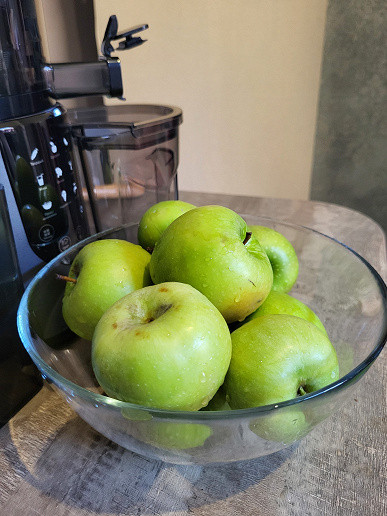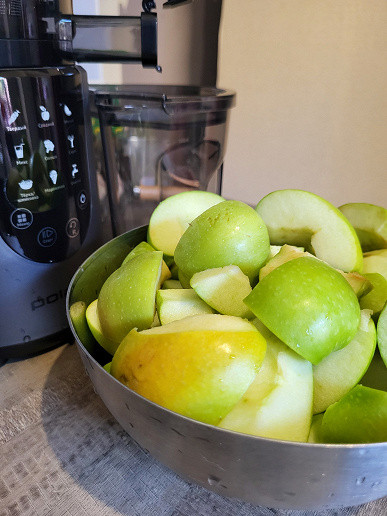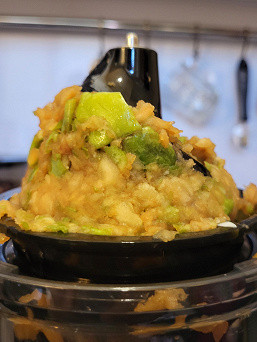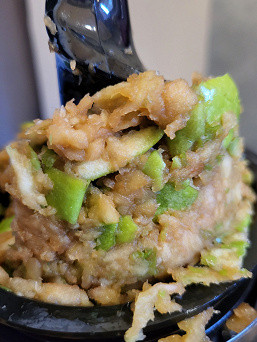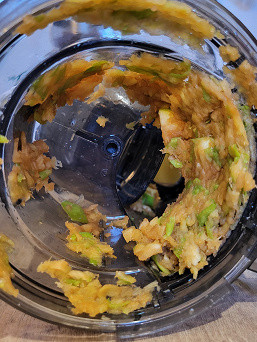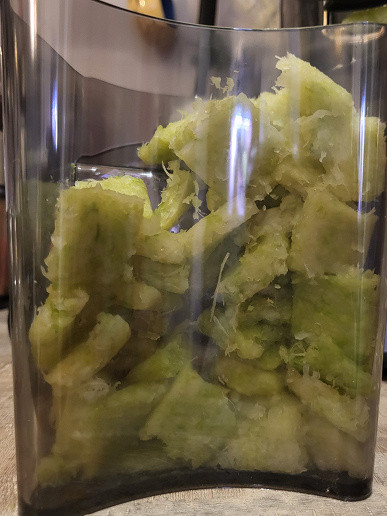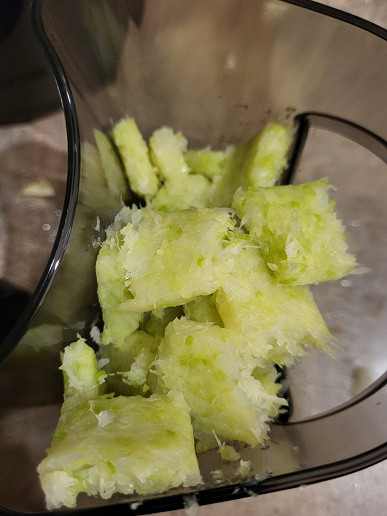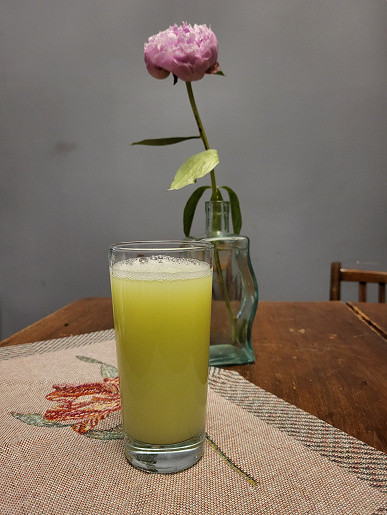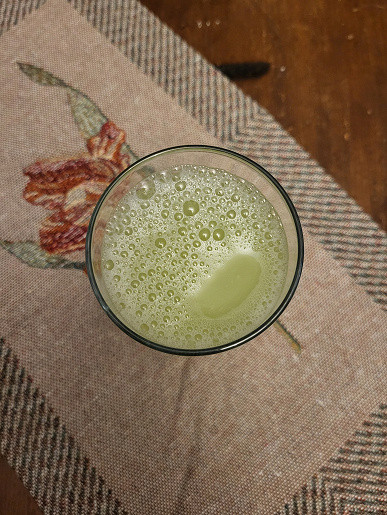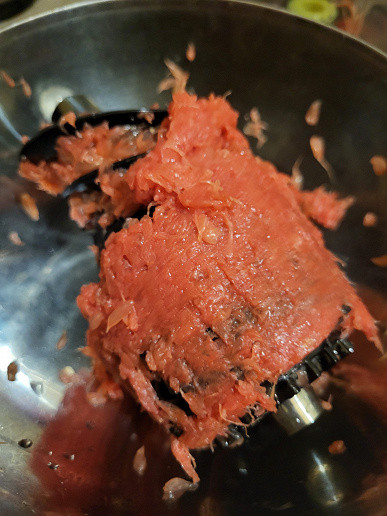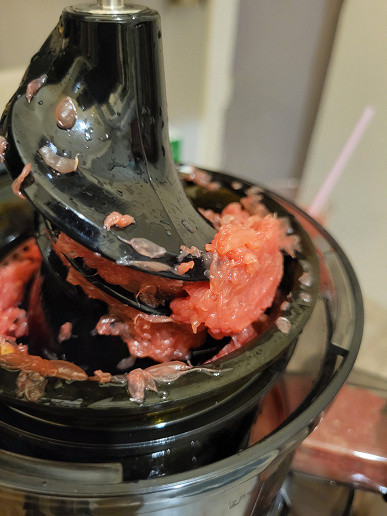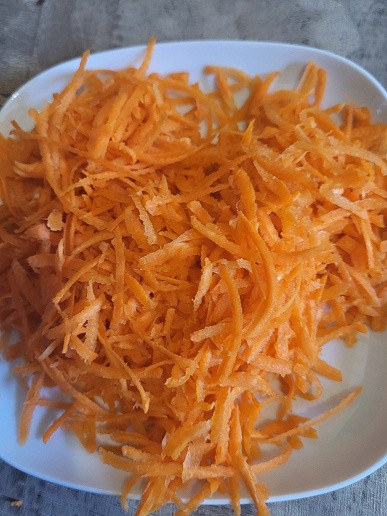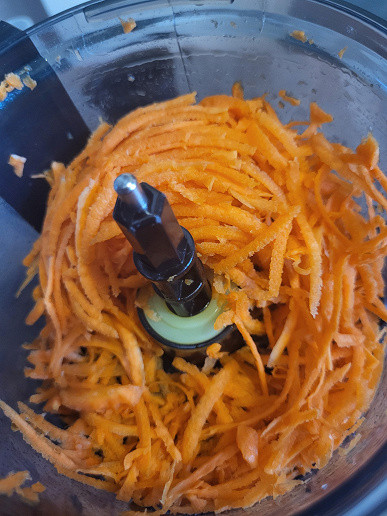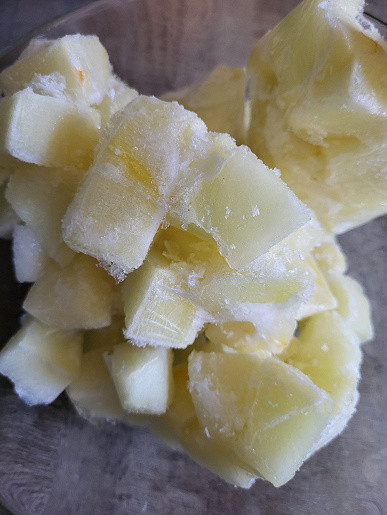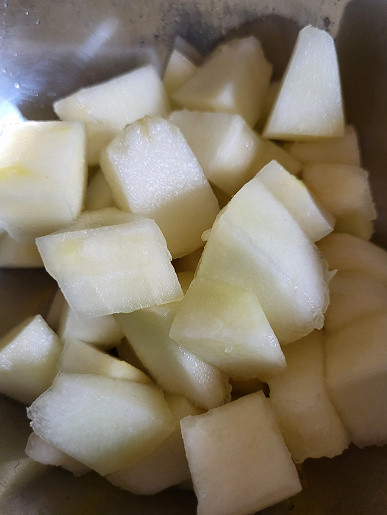The Polaris PSJ 0602 juicer is a universal device with 9 automatic programs that allow you to prepare a variety of juices from soft and hard products, smoothies, ice cream, and also grate or chop vegetables. Auger juicers, thanks to cold pressing, better preserve vitamins and microelements in vegetables and fruits. In addition, nutritionists believe that fresh juice with pulp is healthier, as it contains important fiber.
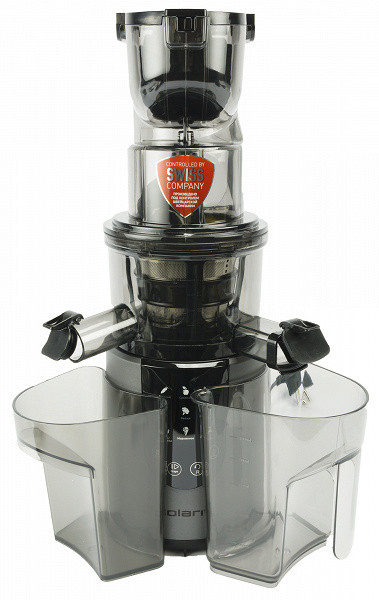
The auger juicer is much quieter than the centrifugal one, which allows you to turn it on even at night when everyone is asleep. Let's see how much of the above applies to the Polaris PSJ 0602.
Characteristics
| Manufacturer | Polaris |
|---|---|
| Model | PSJ 0602 |
| Type | vertical auger juicer |
| Country of origin | China |
| Guarantee | 24 months |
| Service life * | 3 years |
| Nominal power | 200 W |
| Maximum power | 600 W |
| Body color | grey with black inserts |
| Auger material | plastic |
| Filter material | steel; tritan |
| Control | sensory |
| Auger rotation speed | 50-60 rpm |
| Operating modes | 9 automatic programs |
| Additional functions | drip-stop function, reverse function |
| Protection | from improper assembly and overheating |
| Additional accessories | cleaning brush |
| Diameter of loading neck | 78 mm |
| Juice/pulp container capacity | 1000/800 ml |
| Weight | 3.9 kg |
| Dimensions of the box | 240×230×565 mm |
| Length of network cable | 1 m |
* Contrary to popular belief, this is not a period after which the device will necessarily break down. However, after this period, the manufacturer ceases to bear any responsibility for its functionality and has the right to refuse to repair it, even for a fee.
Equipment
The juicer is packed in a strong cardboard box, designed in the Polaris corporate style. The device itself is depicted on a black background, as well as brief information about its technical characteristics and main functions. The box is equipped with a handle for easy transportation.
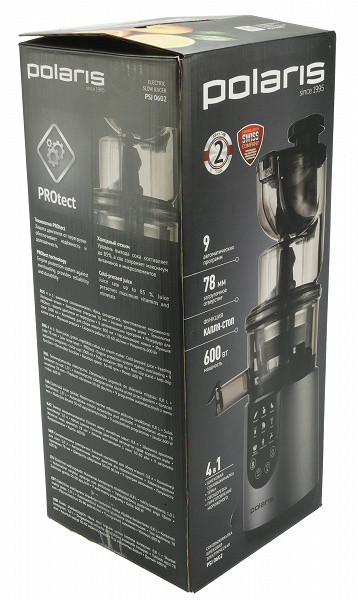
Inside the box we found the juicer along with its components and accessories, each of which is packed in a separate plastic bag. The entire structure is securely fastened with two foam inserts.
The kit includes:
- the device itself
- a pulp container
- a juice container with a filter
- a plastic pusher
- a cleaning brush
- a cutting knife (shredder)
- a cutting knife (grater)
- a cutting knife holder
- a cutting knife holder axis
- a juice mesh filter
- an ice cream filter
- instructions and a warranty card
At first glance
This is what the juicer looks like when assembled — a fantastic alien design that causes slight horror.
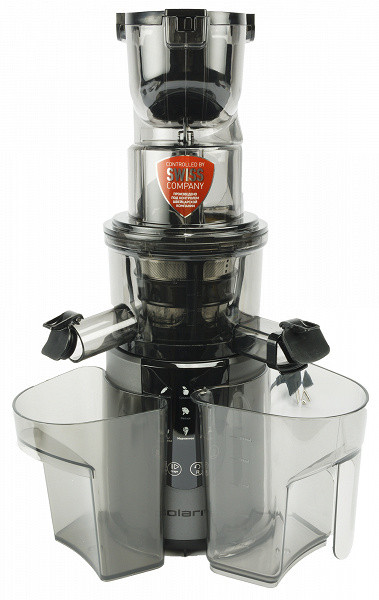
What does it consist of and how to assemble it?
The motor block is made of gray, non-marking plastic, and there is a metal pin on the top panel.
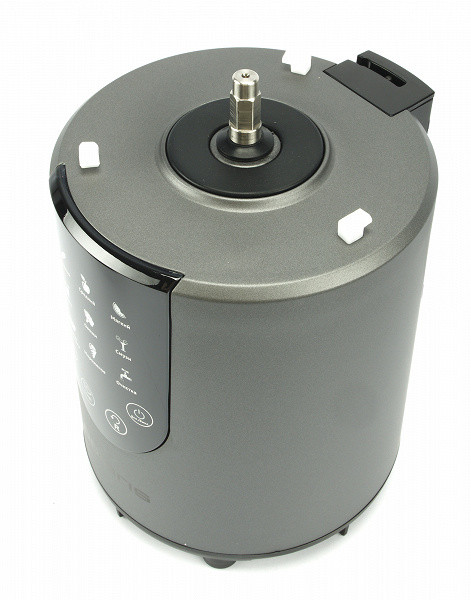
A working bowl made of transparent smoky plastic is installed on the motor block. The bowl is equipped with two spouts: a round one for juice and a rectangular one for pulp.
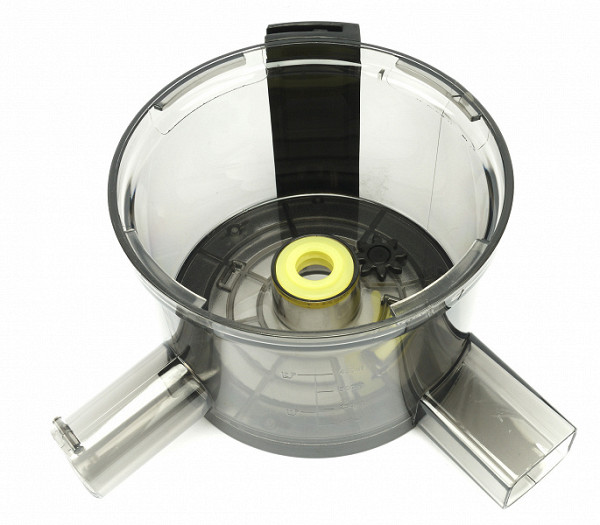
Each spout comes with a plug (on the right in the photo). On the left in the photo is the axis of the holder of the cutting knives for the grater.
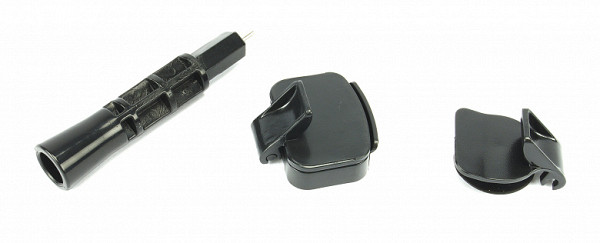
The two photos below show the pulp and juice spouts with plugs. It is clear that the spouts can be opened and closed if necessary.
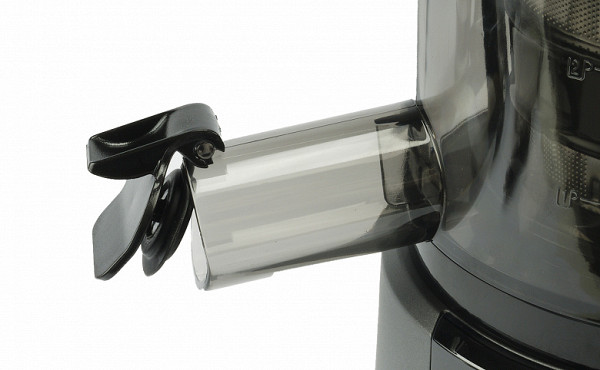
Juice spout with plug
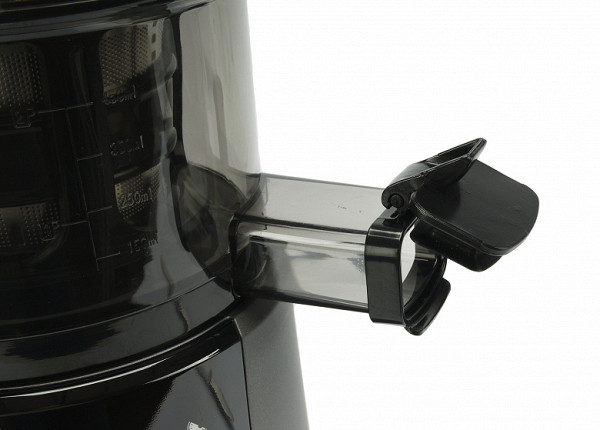
Pulp spout with plug
The filters are inserted into the working bowl. On the left is a juice filter with a mesh, on the right is an ice cream filter, which does not have a mesh for the juice to come out.
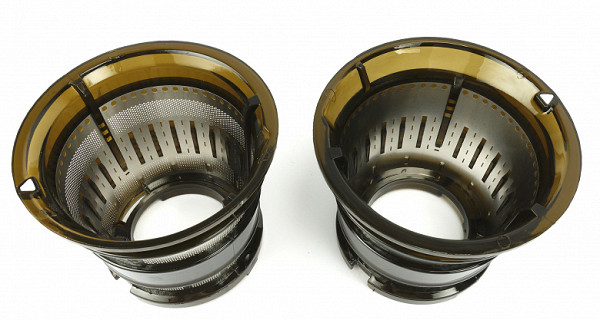
The weighty and solid auger is made of durable-looking black plastic.
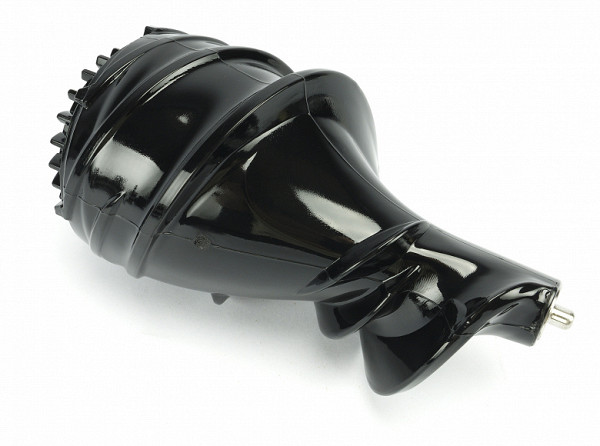
So, the working bowl is installed on the motor block, the filter is inserted into the working bowl, the auger is inserted into the filter; the auger should coincide with the metal pin on the body.
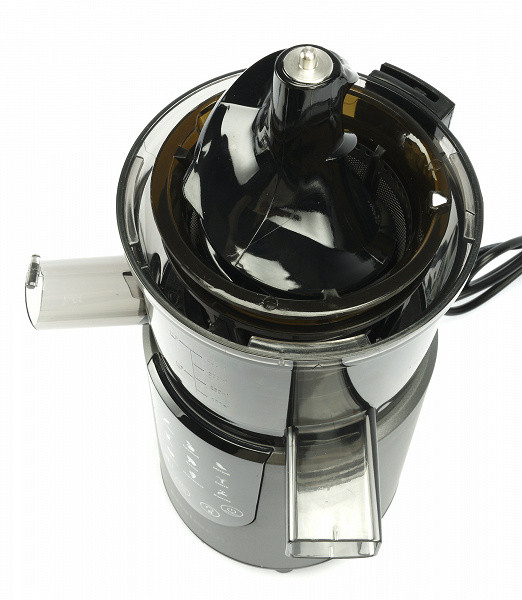
The design is completed by the top cover, which has two loading necks: large and small. The large neck is closed in the photo. The cover is fixed on the bowl with the filter and the auger by turning it clockwise.
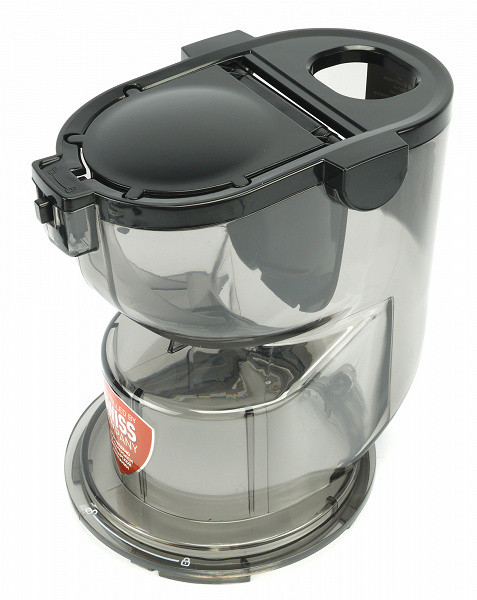
This is what the assembled structure looks like, the height of which is 46 cm (not counting the height required for the pusher to operate).
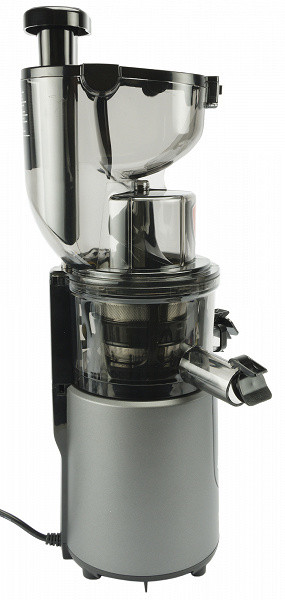
In addition to the basic functions of the juicer, the device is also equipped with a grater function and the corresponding attachments. The assembly process of the grater is similar to that of the juicer. The following photo shows the motor unit with the installed axis for the cutting blade holder.
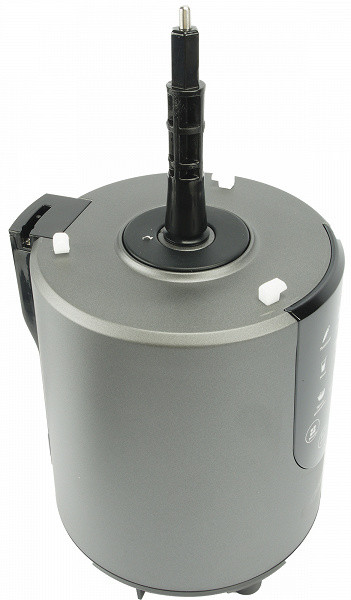
Next, the working bowl is installed on the device.
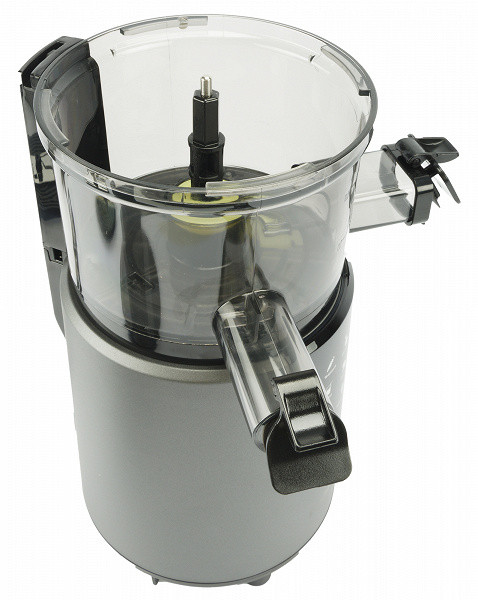
A cutting knife holder is installed on the bowl, into which a cutting knife is inserted.
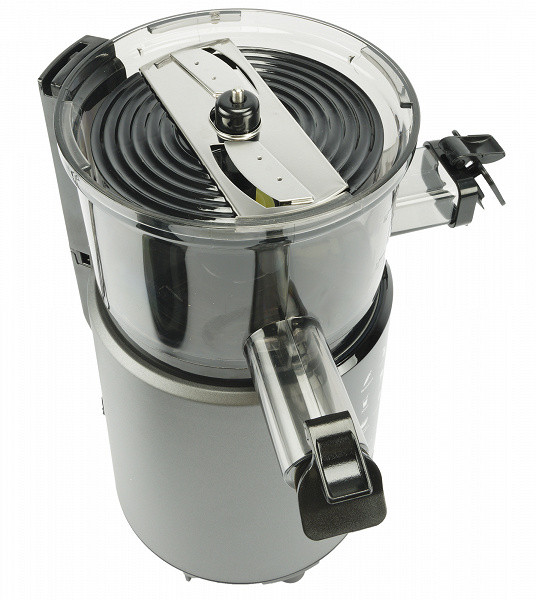
In the photo below is a holder with a cutting knife inserted into it, on the left is a grater knife.
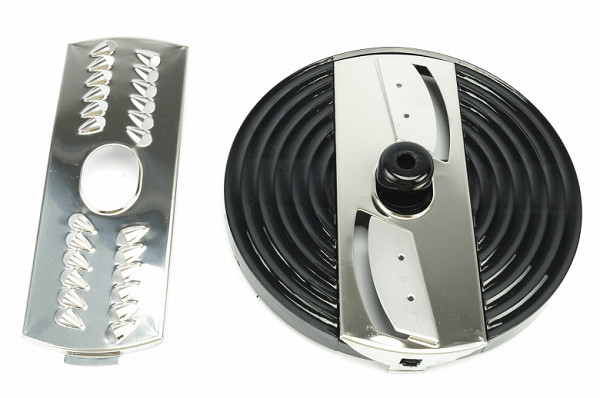
This is what the assembled structure looks like, which functions as a grater.
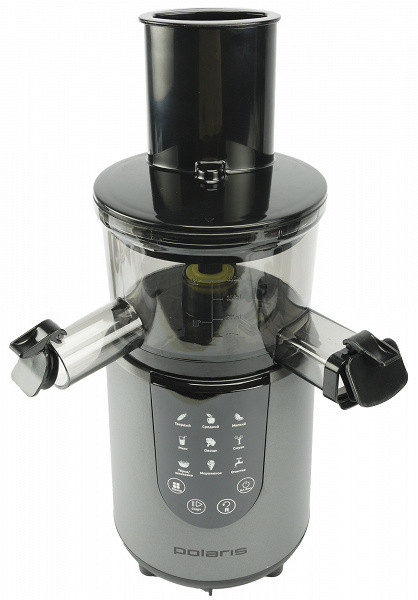
The structure is closed by a top cover, which is also complemented by a pusher.
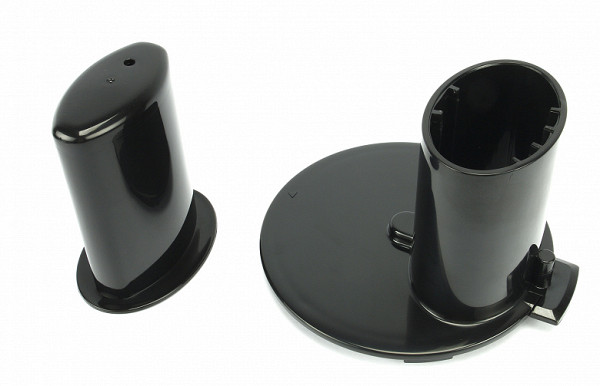
The containers for juice (1000 ml) and pulp (800 ml) are made of transparent smoky plastic. The containers are similar in shape, which allows them to be inserted into each other, saving space during storage.
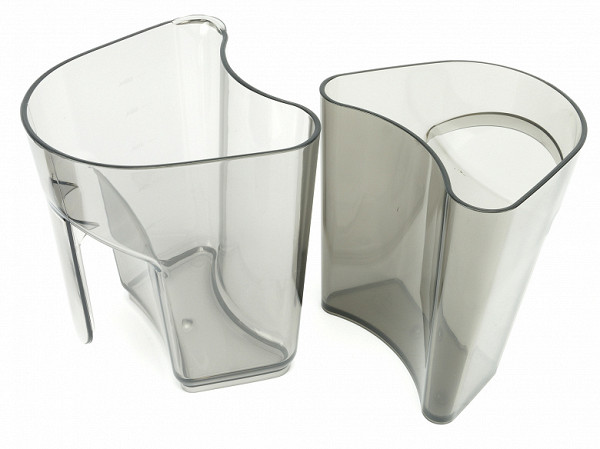
A fine-mesh foam filter is also installed on the juice collection container.
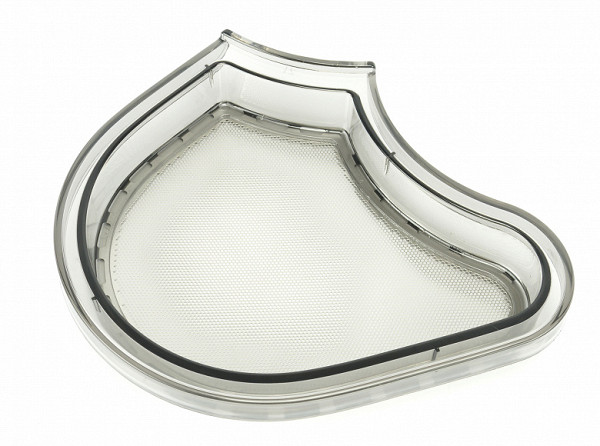
To care for the device, the manufacturer offers a cleaning brush.

All Polaris PSJ 0602 parts and accessories look neat and reliable. The assembly process is quite simple and clear.
Instructions
The user manual is presented as a 48-page brochure in Russian, Ukrainian and Kazakh. It describes in detail the structure of the juicer, its operating principles, recommendations for safe use and advice on caring for the device.
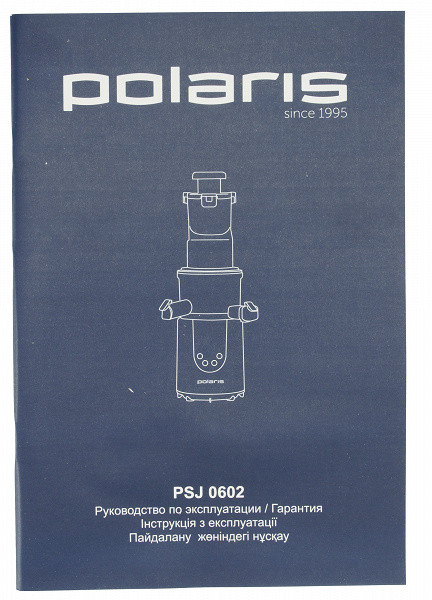
The text is logically structured, written in clear language and provided with the necessary illustrations and diagrams.
Control
The juicer is easy to operate.
In the lower right corner there is an on/off button with a traditional symbol and the inscription «On/Off». After connecting the device to the network, a sound signal is heard, the button starts flashing red, and the juicer goes into standby mode.
When you press the button again, it lights up red, and the indicator of the selected program for squeezing hard vegetables and fruits starts flashing. Now the device is ready for operation, and using the «Menu» button you can select the desired mode, which is indicated by the pictogram.
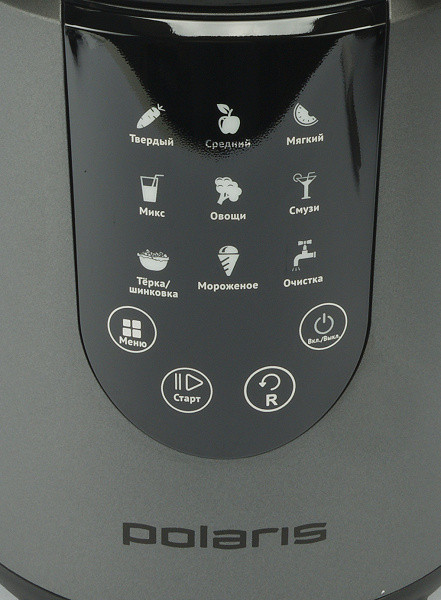
Below in the table we have listed 9 automatic programs of the Polaris PSJ 0602 juicer:
| Solid | pressing hard fruits and vegetables: carrots, beets |
|---|---|
| Medium-hard fruits and vegetables | squeezing medium-hard fruits and vegetables: apples, pears |
| Soft fruits and vegetables | squeezing soft fruits and vegetables: watermelon, grapes |
| Mix | squeezing juices from a mixture of hard and soft fruits |
| Vegetables | squeezing juice from vegetables |
| Smoothie | only for soft fruits and vegetables: tomatoes, strawberries |
| Grater/Shredder | for shredding and grating various products such as potatoes, carrots, cucumbers, etc. |
| Ice cream | for making ice cream from soft, low-fiber fruits |
| Cleaning | for cleaning the device |
To start working in the selected program, you need to press the «Start» button once. Pressing it again will switch the device to the «Pause» mode. To return to normal operation, you need to press the «Start» button again.
Another important button is «Reverse», which activates the reverse function of the engine. When you press the «Reverse» button, the reverse stroke begins, which after 10 seconds automatically switches to the «Pause» mode.
Operation
Before testing, we thoroughly washed all removable parts of the device and wiped the body with a damp and then dry cloth. Assembling the juicer did not cause any particular difficulties, although the number of parts was impressive. According to the instructions, the continuous operation of the device should not exceed 20 minutes, after which you should take a 10-minute break. In our case, the juicer never worked longer than 5 minutes at a time.
The Polaris PSJ 0602 works quite quietly and without problems. We did not encounter the need to use the «Reverse» function, which is designed to eliminate overloads.
However, we encountered difficulties when using a large loading hole. When loading products, they are fed inside not by a pusher, but by a thrower. As a result, some parts of the products get stuck between the thrower and the body, which can block the movement of the lid and stop the flow of products. This is especially noticeable when processing cabbage, when thin leaves easily get into the gap and block the movement.
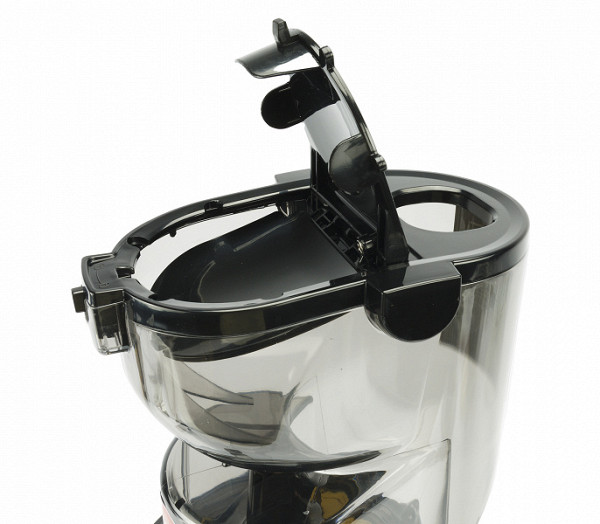
As a result, we came to the conclusion that the small loading hole turned out to be more convenient, although the supply of products into it is limited. Because of its small size, products have to be loaded slowly and carefully, which also slows down the juicer.
Theoretically, the thrower can be removed (it is attached with two screws), but we did not dare to do this.
The standard test with apples (see the section «Practical tests») was also not successful. The hole for the pulp outlet became clogged with apple peels, which blocked its exit. The same problem arose when trying to make juice from blueberries: the hole became clogged with berry skins. Apples can be pre-peeled, but this will not work with blueberries. The juicer copes with hard products without peel, such as carrots or cabbage, without problems.
When disassembling the juicer, especially after testing with apples, difficulties arose. The pulp accumulated between the filter walls and the auger, blocking the latter and requiring considerable effort to clean it.
We also found the placement of the juice and pulp spouts inconvenient. With the standard placement, when the control panel is visible, the spout often hits the edge of the container, causing concerns that juice or pulp might spill past.
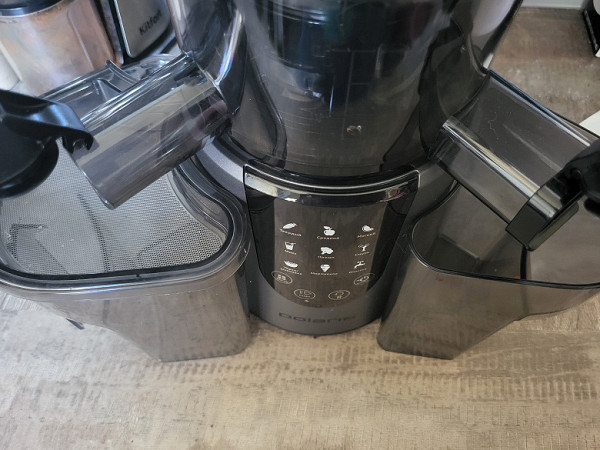
If you move the containers so that the spouts are closer to the center, the containers begin to cover part of the control panel. This makes it difficult to turn on and stop the juicer, as well as select automatic programs.
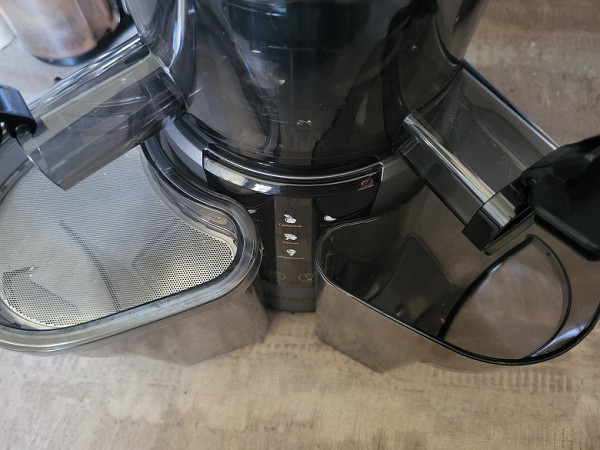
For the convenience of the user, it might be better to place the juice and pulp spouts on the sides of the body, further from each other.
Otherwise, the operation of the juicer did not cause us any questions or comments.
Care
After use, all parts of the juicer, except for the motor unit, should be washed with warm water and a mild detergent. You can use the included brush to clean the filter. The motor unit should be wiped with a damp and then dry cloth and not immersed in water.
The juicer also has a self-cleaning function, which should be started before use. To do this, assemble the juicer, close the outlet openings for juice and pulp with plugs, connect the device to the network. Then pour 500 ml of water through the loading hole and select the «Cleaning» mode. After the process is complete, open the holes for the juice and pulp outlet.
Our measurements
We recorded the maximum power consumed by the device when squeezing carrot juice — 218 W. The juicer works quietly and really won't wake anyone up at night.
Practice tests
Essential Test #1 (Granny Smith Apples)
For the first mandatory test, we used a kilo of Granny Smith apples. The instructions say to cut hard vegetables like carrots, beets, or stringy celery into small pieces of 1.5-2 cm. However, for the apples, we decided to cut them larger.
We set the juicer to the medium-firm setting for fruits and vegetables, suitable for apples, and turned it on while simultaneously loading the apples into the large feed chute (see Operation). This resulted in a lot of foam, which was left in the filter.
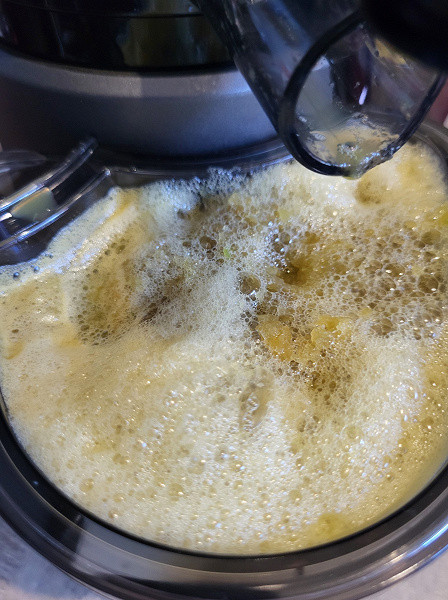
500 ml of juice and almost no pulp in the container. All the pulp remained on the auger:
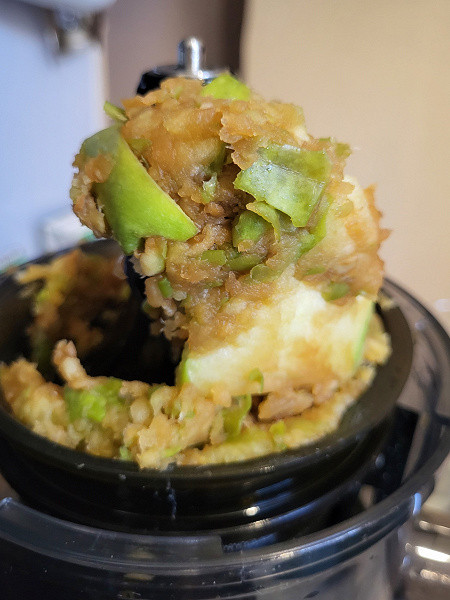
During disassembling the juicer, it turned out that the hole for the pulp outlet was clogged (pictured below).
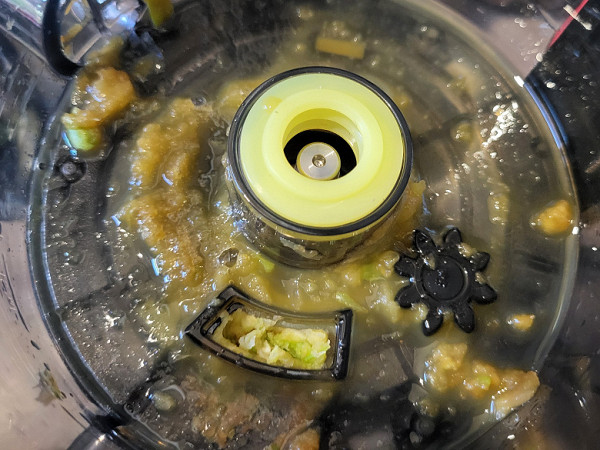
It took us about 3.5 minutes to process a kilogram of apples, but this result seemed strange to us because there was no pulp in the expected place.
So we decided to repeat the test, bought more apples and cut them into smaller pieces.
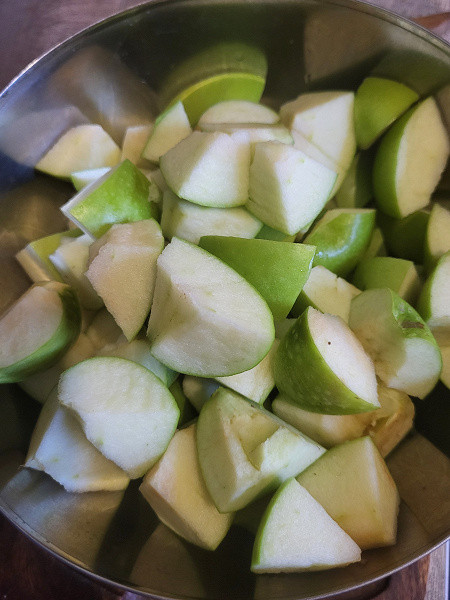
The result remained the same: the hole for the pulp outlet was clogged, and the pulp in the photo below is all we got after processing a kilogram of apples.
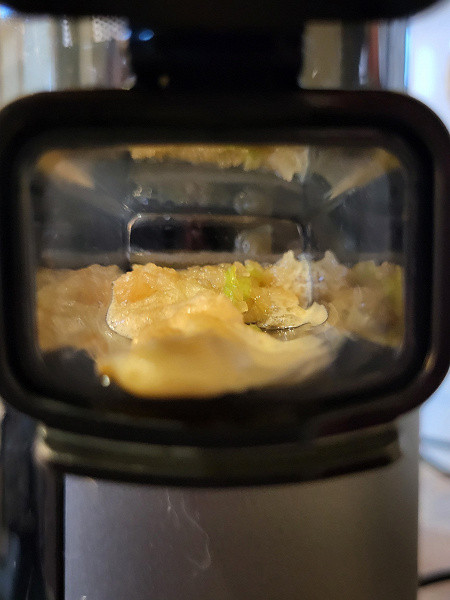
All the pulp remained on the auger and inside the juice filter:
However, we still got the same 500 ml of juice.
It is worth noting that the juicer is assembled quickly and without problems, but disassembling the device, especially when the pulp clogs the auger and filter, requires significant physical effort.
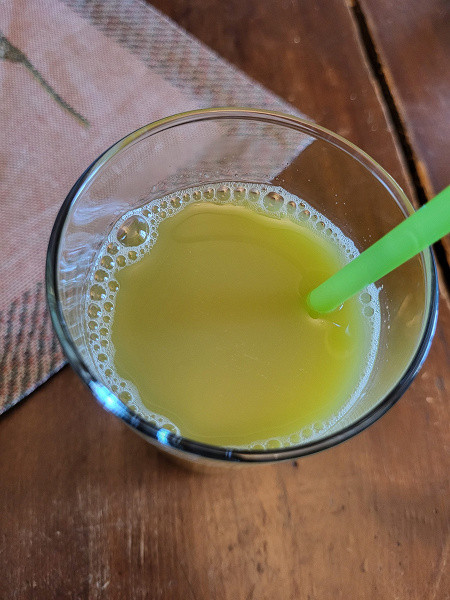
The juice itself was tasty, but perhaps not worth all the trouble.
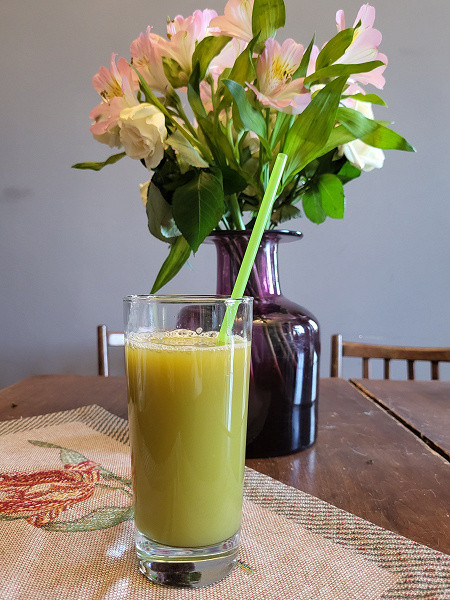
Result: 4 minutes, 500 ml of juice (without foam).
Mandatory test #2 (carrot)
With carrots, despite their hardness, the process was much easier and simpler than with apples. We cut the carrots into pieces of the recommended size and used the mode for hard vegetables.
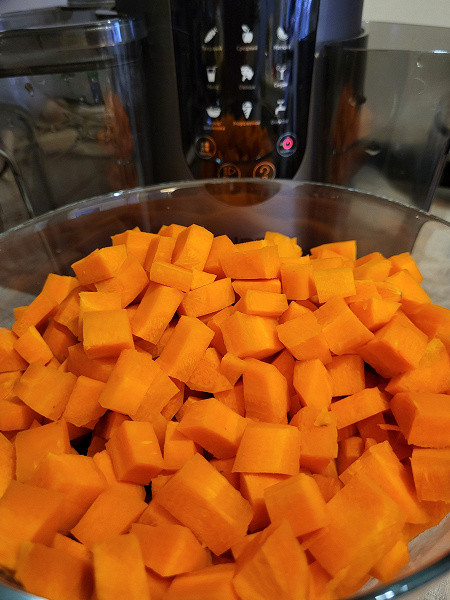
The cake coming out of the cake hole was uniform and regular. Not only was it a beautiful color, but it also had a good consistency: quite dry and fine. This cake is ideal for use in other recipes, such as carrot cutlets or carrot cake.
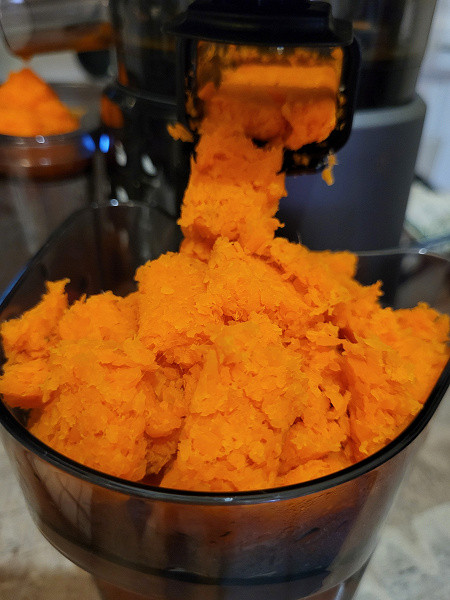
There was just a little bit of carrot left on the auger:
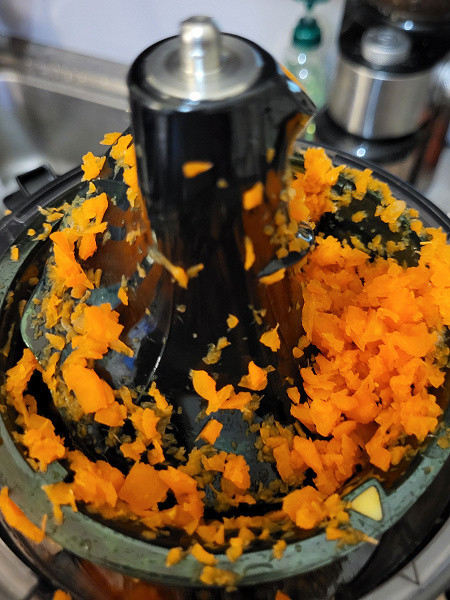
The juice also turned out to be quite good (the color is, of course, the most important thing).
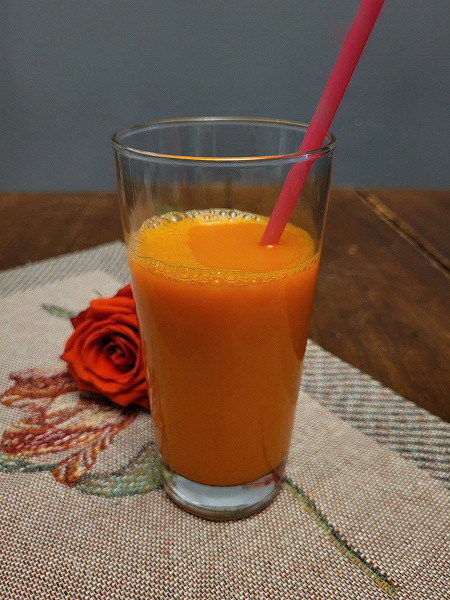
Result: 2 minutes 30 seconds, 300 ml of juice (without foam).
Mandatory test #3 (cabbage)
To prepare cabbage juice, we chose the medium mode, similar to the one we used to squeeze juice from apples. In this case, the juicer worked successfully, and the pulp turned out to be of excellent quality: clear squares of a delicate green color.
Foam separately, juice separately.
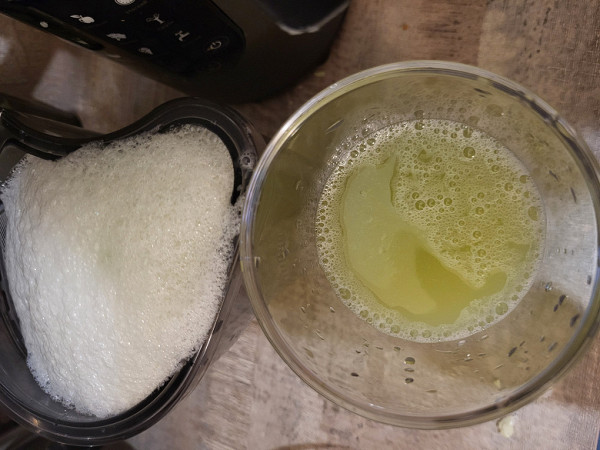
The result was a wonderful cabbage juice (it’s just not clear how and why to drink it, although it is so-o-o healthy!).
Result: 4 minutes 16 seconds, 550 ml of juice.
Mandatory Test #4 (Pink Grapefruit)
We squeezed a kilogram of grapefruits using the soft vegetables and fruits setting.
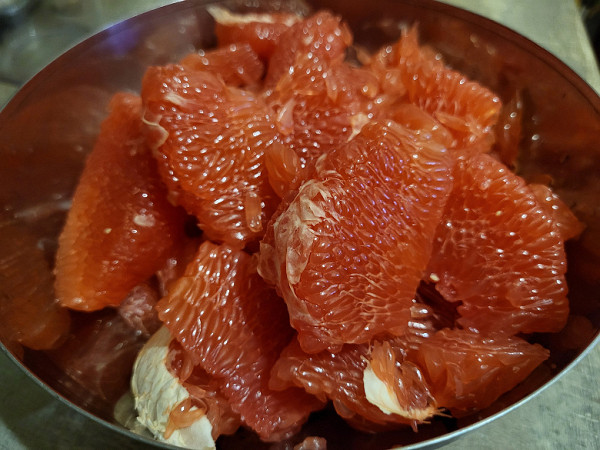
There is almost no cake left:
The juice turned out wonderful and tasty (and yes, we remind you that it is used as one of the ingredients for many cocktails, and is simply healthy).
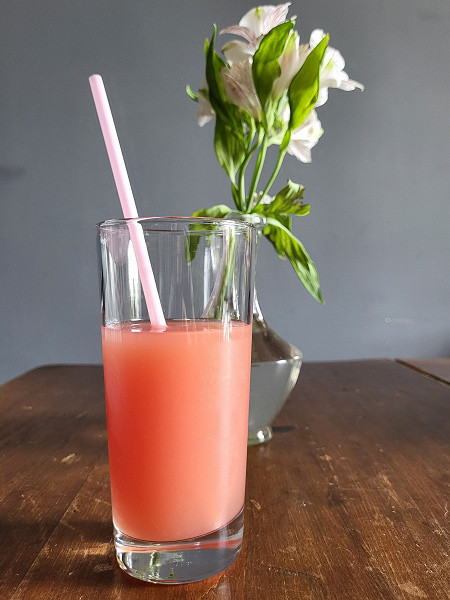
Result: 2 minutes 40 seconds, 700 ml of juice (without foam).
Shredder
After running the standard tests, we decided to test the grater and shredder functions. We chose carrots as our first experiment, as they are one of the hardest and most commonly used root vegetables. We installed the grater in the blade holder, assembled the juicer, and ran it in the «Grate» mode.
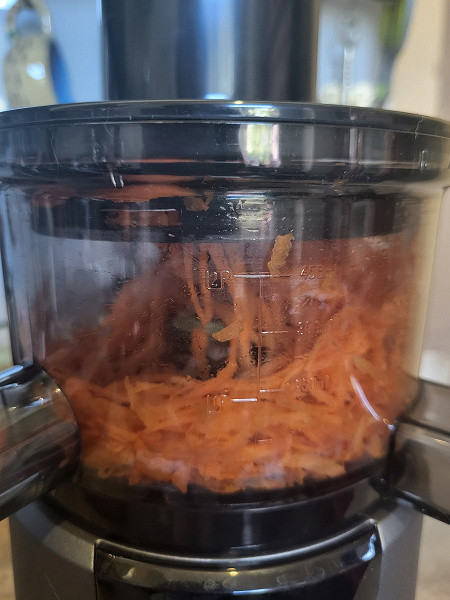
There was only a little carrot left on the knife:
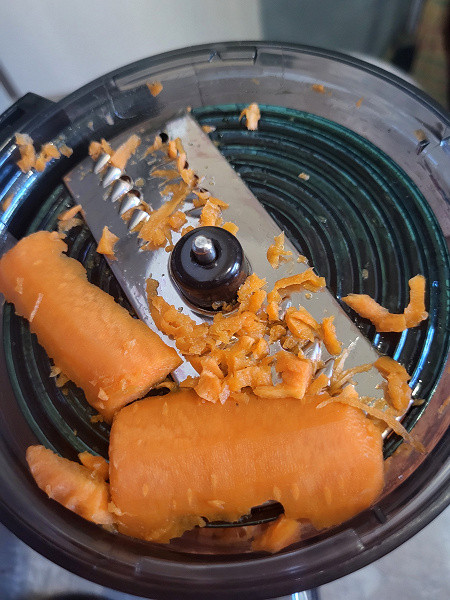
And when we removed the knife, we saw almost perfectly grated carrots.
We then moved on to testing the shredding function, choosing a cucumber. In both cases — for grater and shredder — we used the vegetables whole, without cutting them first. After working with carrots, we noticed residue on the knife, but with the cucumber, everything turned out quite unusual: only a long tail remained from the cucumber, and there was practically no waste.
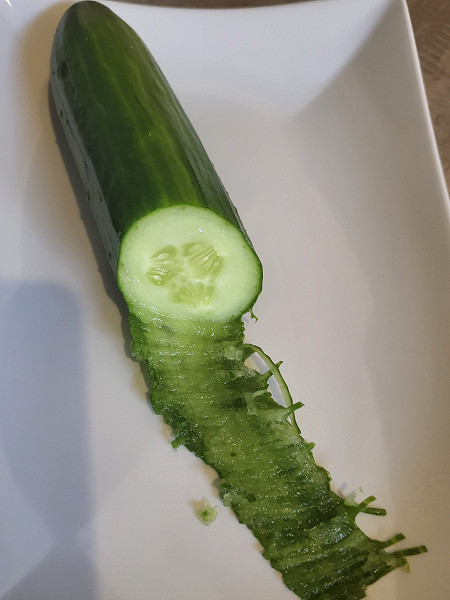
The cutting turned out to be neat and thin.
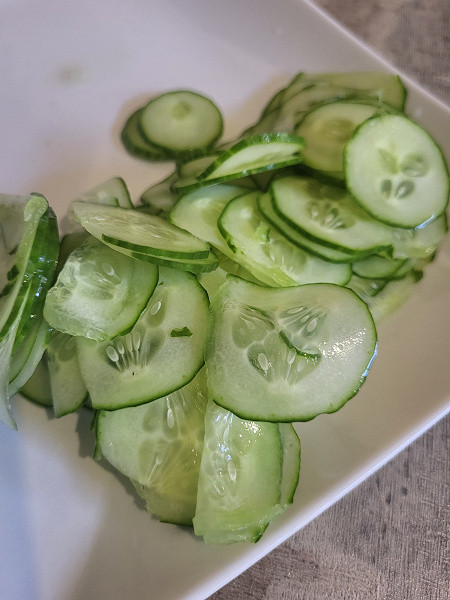
Then we decided to try shredding carrots — and it also turned out great.
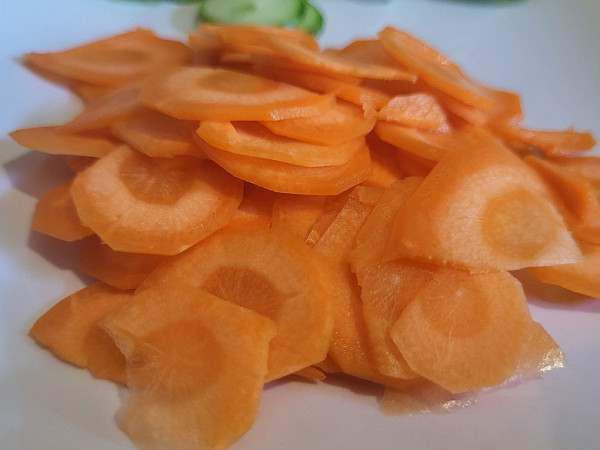
Result: excellent
Ice cream maker (melon sorbet)
As a final test, we decided to check the ice cream attachment. The name of the attachment seemed a bit inaccurate to us, since the result is more like sorbet — fruit ice cream without milk and cream.
For the experiment, we chose a melon. We cut it into small pieces and put it in the freezer.
The manufacturer recommends using the fruit 15-20 minutes after freezing, when it has thawed a little and is soft enough to pierce with a fork. However, with the melon, we had to wait almost an hour to achieve the desired state.
We loaded the melon into the juicer and selected the automatic «Ice Cream» mode, placing the juice container in place of the pulp container, as instructed in the instructions. The sorbet came out of the spout in neat square portions, reminiscent of the pulp coming out of cabbage.
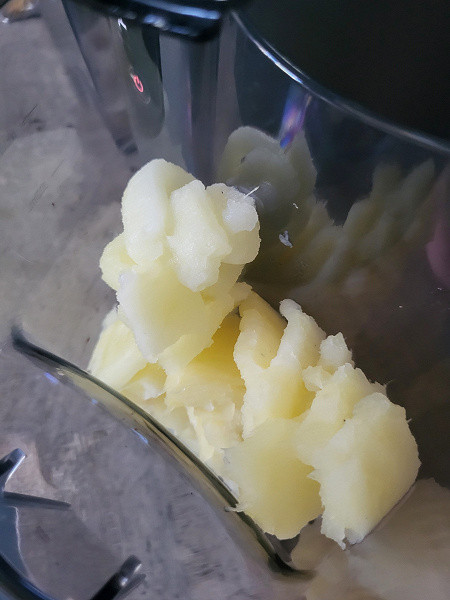
You can add lemon or orange zest and a little powdered sugar to the sorbet, but to be honest, we ate it just like that.

Result: excellent
Conclusions
Overall, the juicer performed excellently: it successfully completed both the main tests and additional tasks. Accessories such as a grater/shredder attachment and an ice cream filter were a nice addition. The presence of 9 automatic programs is also pleasing, as they allow you to not only make juices, but also smoothies, ice cream or grate potatoes for potato pancakes.
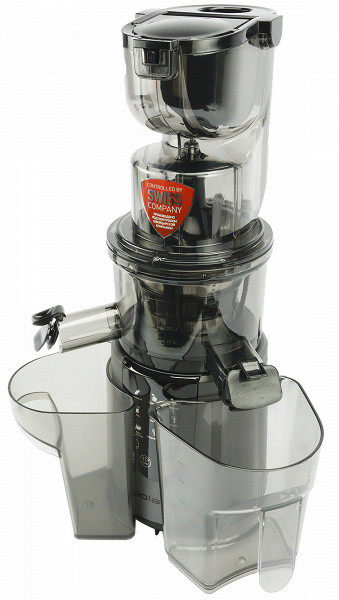
It seems that this quiet and easy-to-use juicer is well suited for home use. When processing large volumes of products, the process will be long, but it can provide a couple of glasses of juice for breakfast quite quickly.
Pros:
- quiet
- additional accessories and functions
- easy to assemble and clean
Cons:
- poorly processes fruits with peel
- inconvenient thrower

